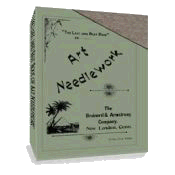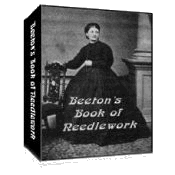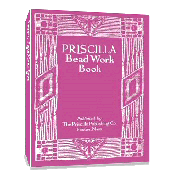[]Subscribe To This Site
The Embroidery Sampler
A Brief History
The word sampler is derived from the Latin word exemplum which means ‘an example to be followed.' Some researchers believe the embroidery sampler came into existence in Spain during the 14th century. The earliest known reference to this type of embroidery piece dates from 1505. Although the name “Sampler” is universal now, they were originally known as Sam Cloths in England.
The earliest dated surviving English Sam Cloths was made by Jane Bostocke in 1598 (see below). Now housed in the Victoria and Albert Museum in London, this piece includes the maker’s name as well as the date of 1598. It uses a variety of stitches and color in the random motifs covering it.

The image above is the Jane Bostocke Sam Cloths, from
the Victoria and Albert Museum website, item number T.190-1960.
Click on picture to see more detail.
In 1523, the first pattern book was printed. Although more pattern books were available by the mid-sixteen century, they were not easily obtained and only the wealthy could afford them. Since these books were unavailable to most needleworkers, they would sew a sample of a design or motif they liked on a piece of cloth. During this time, these patterns were placed randomly on the fabric.
English 16th Century embroidery samplers were, it is believed, not sewn by young girls, but women, and were intended as examples of various stitches and designs. They were long, narrow bands of fabric, approximately 6 – 9 inches wide and were entirely covered with stitches. These became known as Band Samplers and were the prize possession of women who owned them. They included a variety of styles, designs, alphabets, as well as silk and metallic threads. Many of these also included all the earliest laces such as Cut Works, Drawn Threads, Reticellas, etc.
Styles changed later in the 17th century to Spot Samplers although the Band type remained popular. These contained random motifs worked in silk. These figures were intended to be cut out and appliquéd to other furnishings. Because printed patterns were more easily obtained, this type of embroidery piece, although still worked, was no longer used as the object of perpetuating a pattern, but used to exhibit the skill of the embroiderer.
By the 18th century, no young lady’s education was considered complete until she had embroidered in silks and gold thread a Sampler with a bordering of drawn Work, and a center filled with representations of animals, flowers, and trees, accompanied by verses appropriate to the undertaking. By 1770, map samplers were introduced and considered an excellent teaching aid. Young ladies sometimes included mathematical tables, letters, numbers, and even almanacs in their embroidered pieces.
Verses used on these embroidered pieces ranged from Biblical verses to poems. The following verse was worked in 1780 and exhibited at the Ancient Needlework Exhibition in 1881:
Elizabeth Hide is my name,
And with my needle I work the same,
That all the world may plainly see
How kind my parents have been to me.
As patterns became more obtainable, the printed media became a major influence on Samplers. Motifs and designs, once difficult to reproduce, were now easily copied to fabric. The subject matter became more balanced, producing more of a picture than just an assortment of stitches.
Examples of Samplers
Crewel Stitch | Cross-stitch |
Return to top of Embroidery Sampler page.
Return to Hand Embroidery page.
Return to Home page.



 433 pages!
433 pages!

